
Something old and something new
When you’re researching your family history one of the most delightful discoveries is wedding photographs. A fun part about exploring these wedding photographs is seeing how bridal wear has changed across decades.
We have plenty of wonderful wedding stories on Trove including the story of the veil that was worn by 27 brides across six decades. We have a side quest for you. As we look at how bridal wear has evolved over the 20th century, see how many times you can spot the Lockhart wedding veil.
Here comes the brides…
1890s
In the 1890s long sleeves and trains were important parts of the bridal gown. Ornate headwear was also a vital part of the ensemble. It was often accompanied by a long veil.
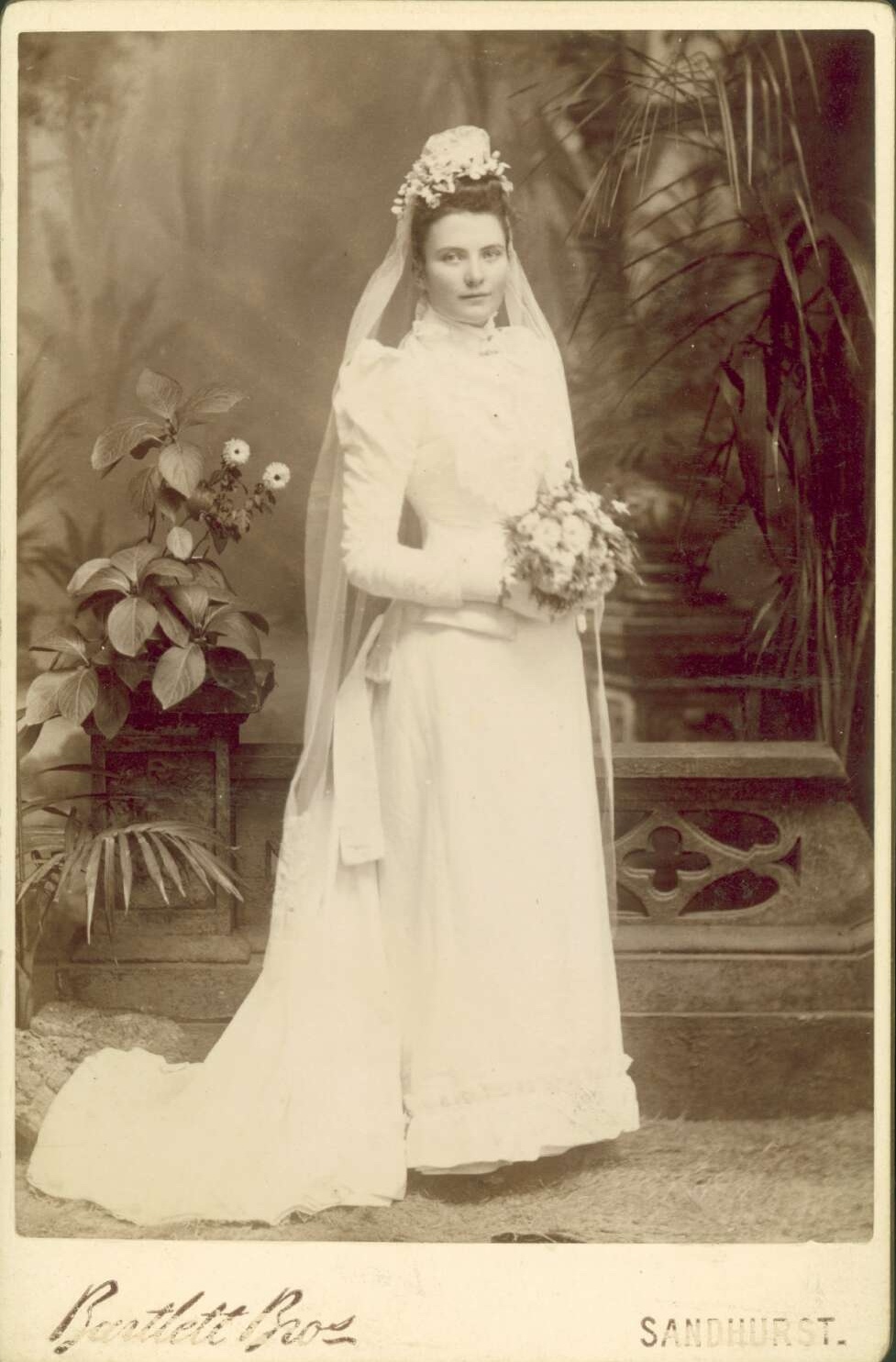
Superstitions were rampant around this time with green thought to be an unlucky colour for the bride to wear at any point on her wedding day. You can read about more wedding superstitions in Moore's Australian almanac and country directory for the year.
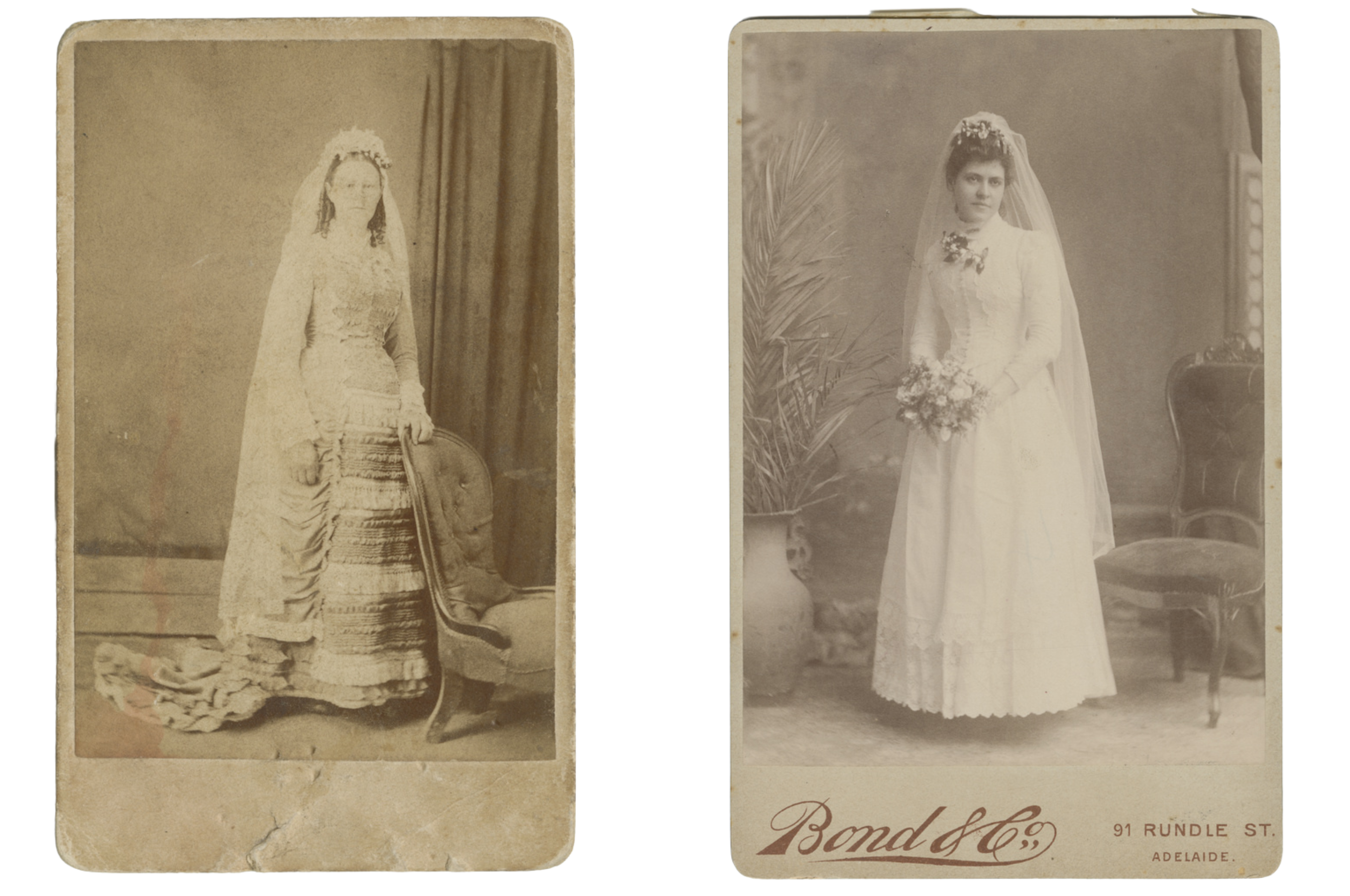
1900s
In the early 1900s, dresses continued to have long sleeves and were often adorned with beautiful decorative lace. A matching lace veil could complete the look.
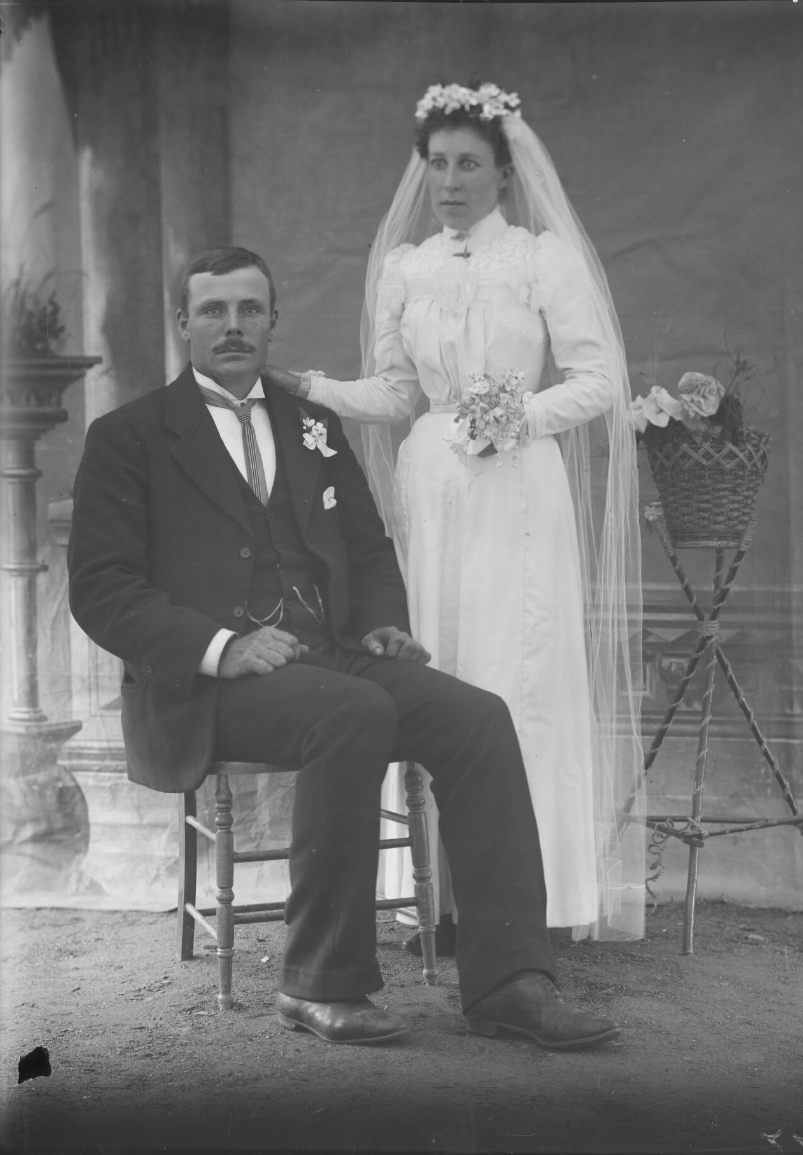
To add a taste of the 1900s to your wedding, check out this recipe for Bride Cake from The Braidwood Dispatch and Mining Journal.
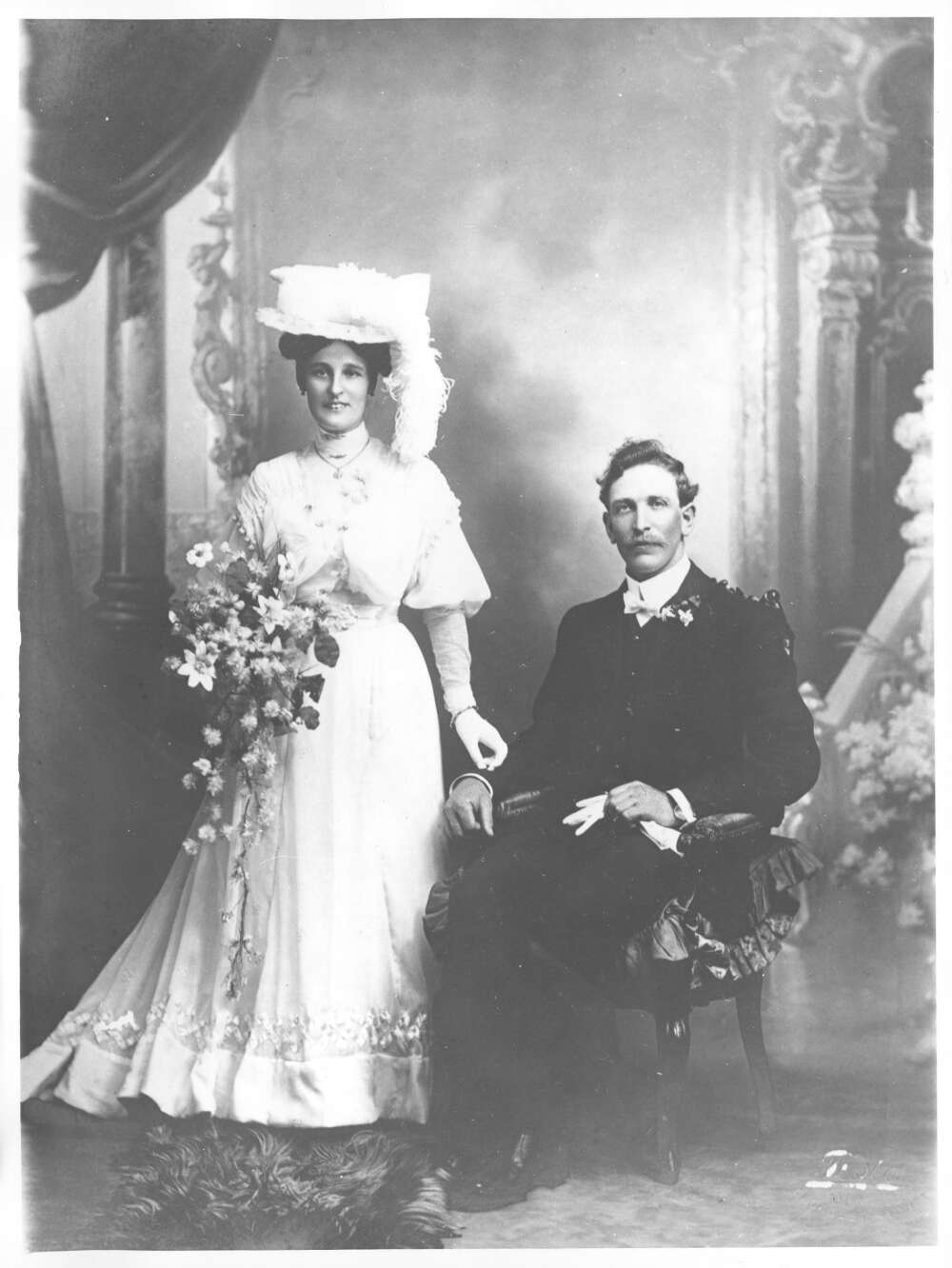
1910s
Wedding dresses had incredible detail in this period. From the stunning lace to the complementary headwear, it was truly impeccable. There was a slow progression towards headpieces with less volume, which would become an important part of 1920s fashion. Women were also starting to abandon the long trains on their dresses.
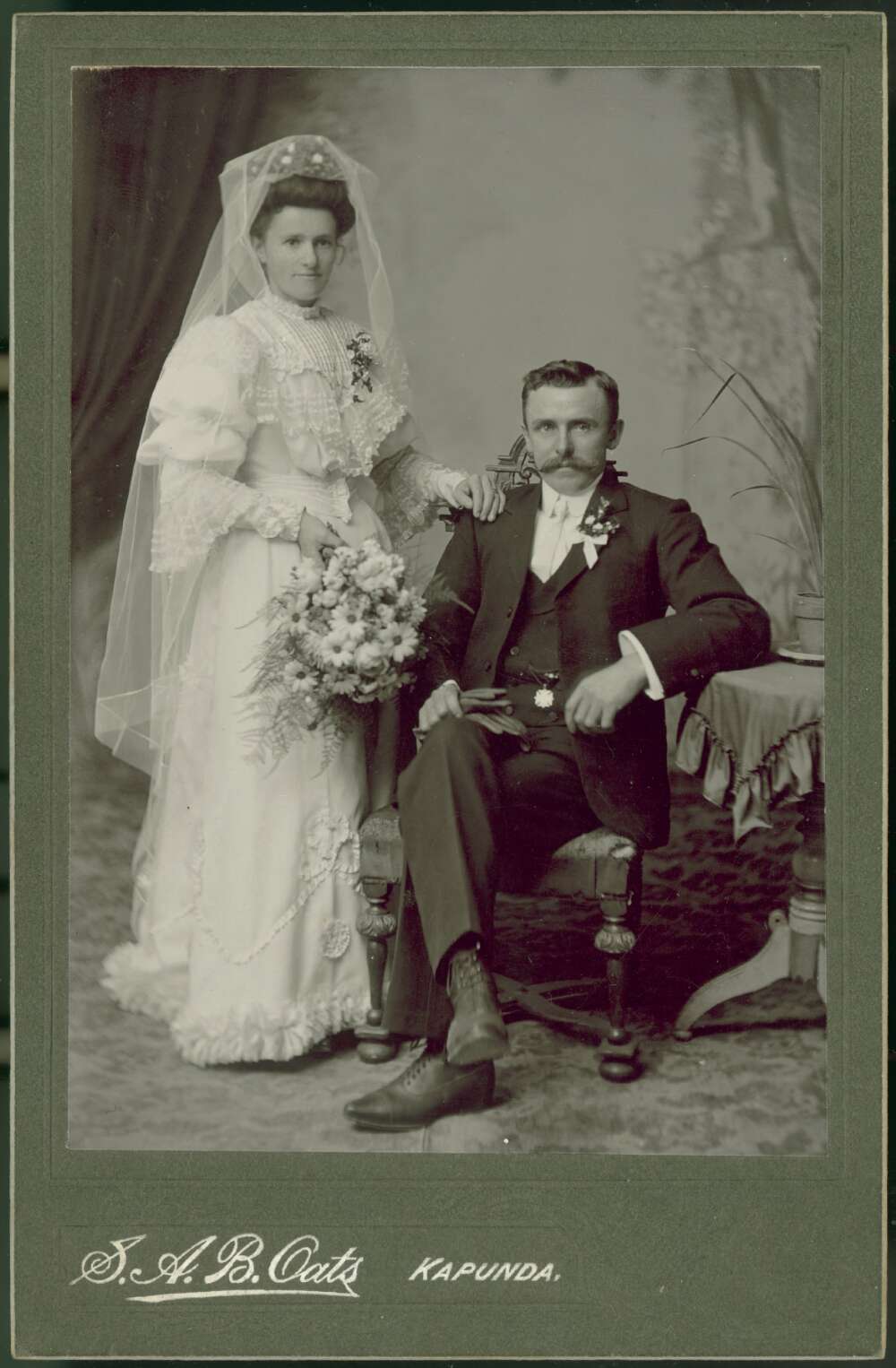
If you like the sound of this style, then you’ll love exploring this wedding sheet music from the 1910s.
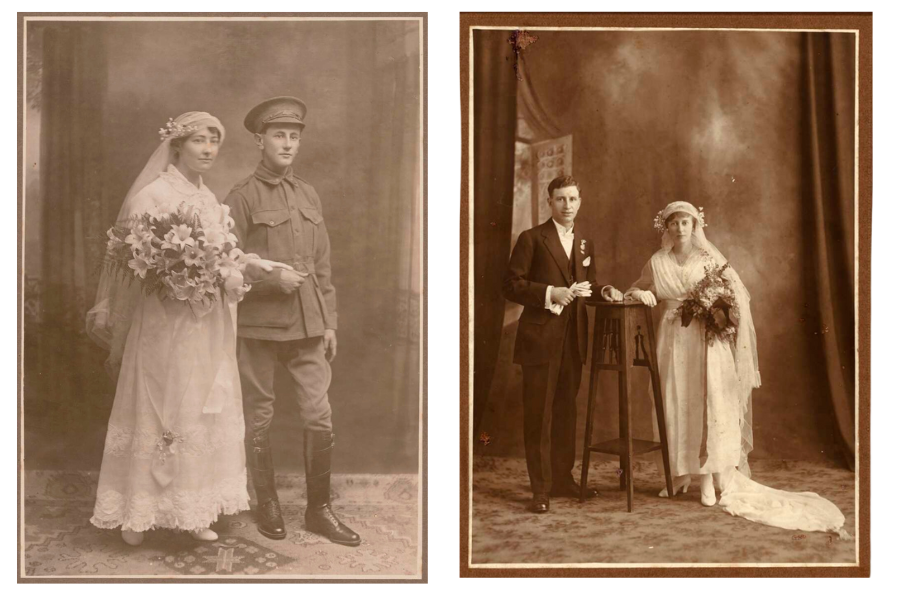
1920s
Flapper fashion was in full swing in the 1920s. The drop waist was an important feature in many wedding dresses. Women opted for flatter headpieces with beautiful embellishments like seed pearls. Satin, lace and tulle were popular materials.

Long sleeves were still common for most brides. Sleeveless would have been pearl-clutching scandalous. Wedding dresses were slightly shorter than earlier decades, ranging from knee to mid-calf to ankle length.
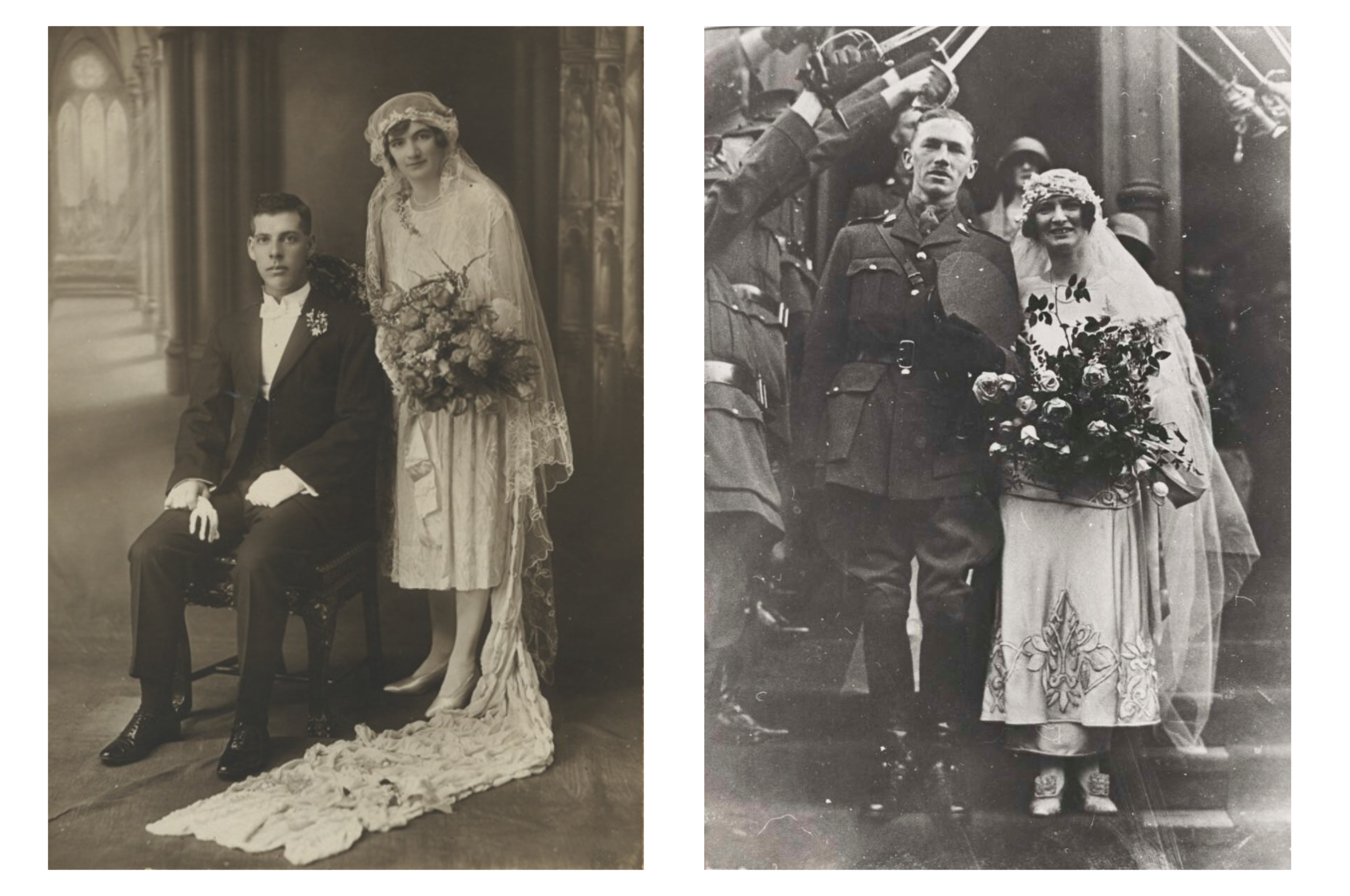
Discover the flowers that were popular in 1920s bridal bouquets in this 1925 The Australian Woman’s Mirror article.
1930s
“Married in white, you have chosen all right;
Married in green, ashamed to he seen;
Married in grey, you will go far away;
Married in red, you will wish yourself dead;
Married in blue, love ever true;
Married in yellow, you’re ashamed of your
fellow;
Married black, you will wish yourself back;
Married in pink, of you he’ll aye think.”
- ‘Wedding Days and Ways Curiosities of Marriage Ritual That Defy Time’, The Australian Woman's Mirror, 30 March 1937, nla.obj-529021497
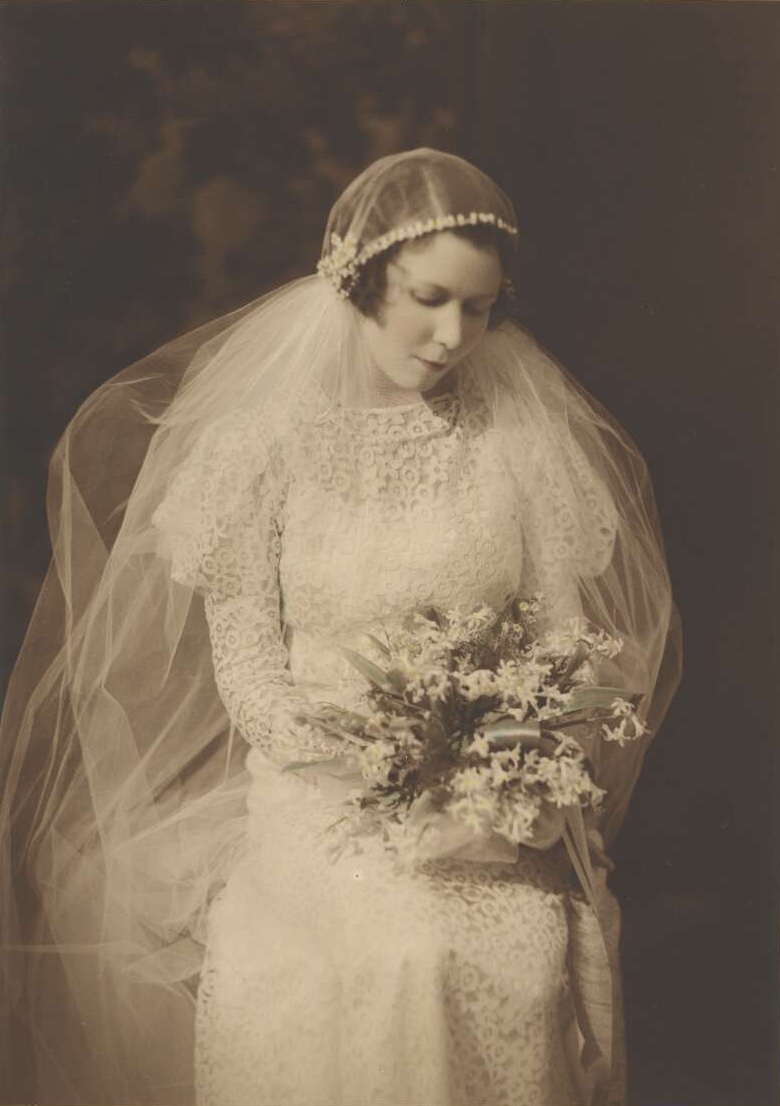
In the 1930s women were using a range of wonderful material for their gowns. In the David Jones Bride book from 1938 materials mentioned include satin, lace, velvet, crepes, matelassé’s, chiffon and organdie. People were also experimenting with gold and silver in their gowns.
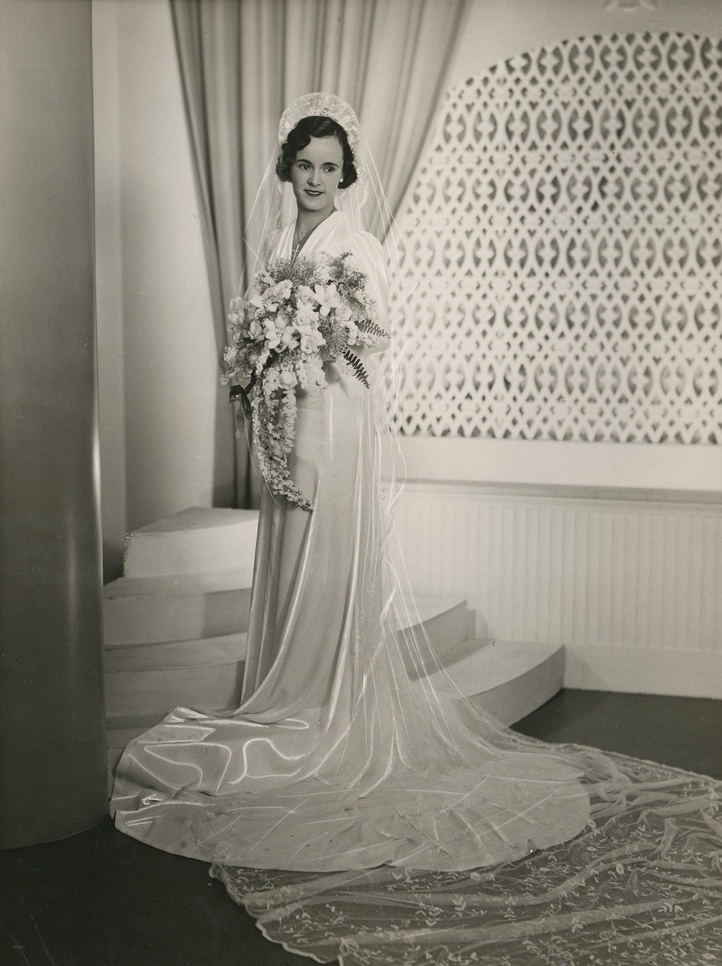
You can also discover this pattern for a bridal cape in the Australian Women’s Mirror.
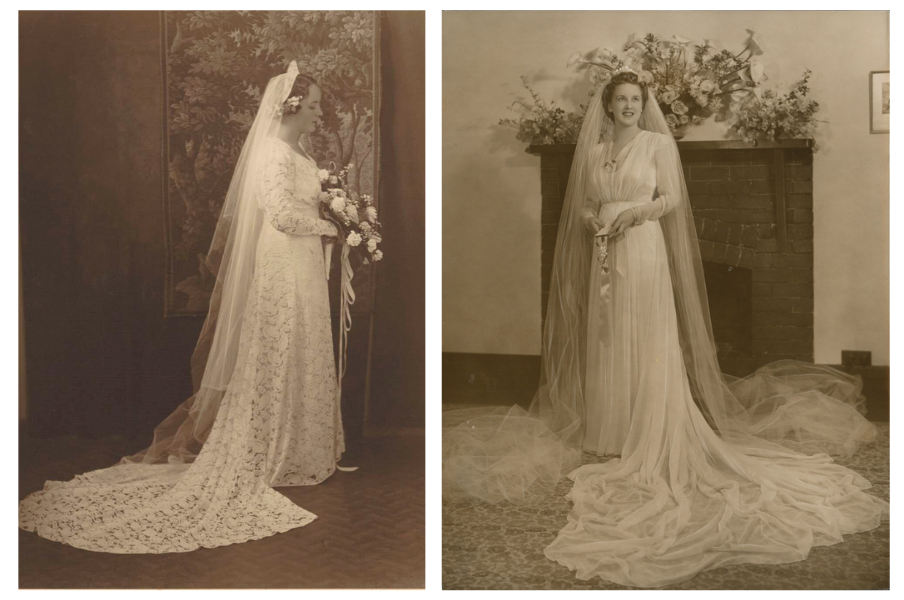
1940s
Long sleeves were still a popular amongst brides and if women wanted a dress with short sleeves it was expected they add long gloves to the ensemble. Satin and tulle were popular materials during this period.
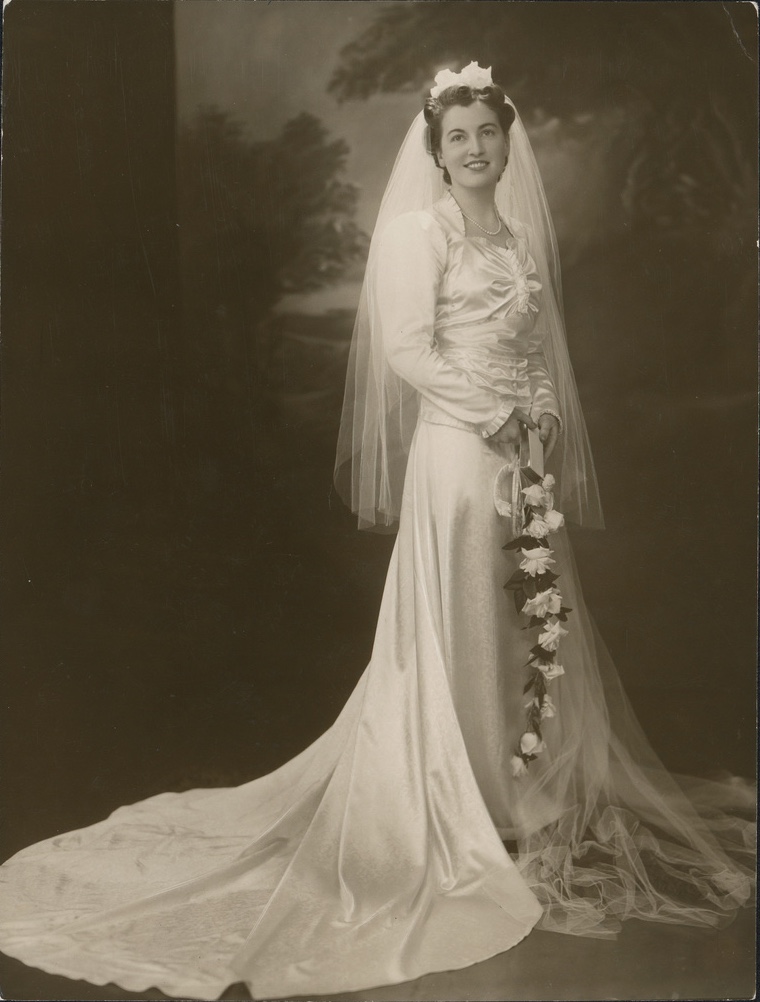
The most special dresses were made by a favourite family member. Read the story of army veteran James Warren Stevens who made his sister’s wedding dress. When she was a child, he also used to make clothes for her dolls.
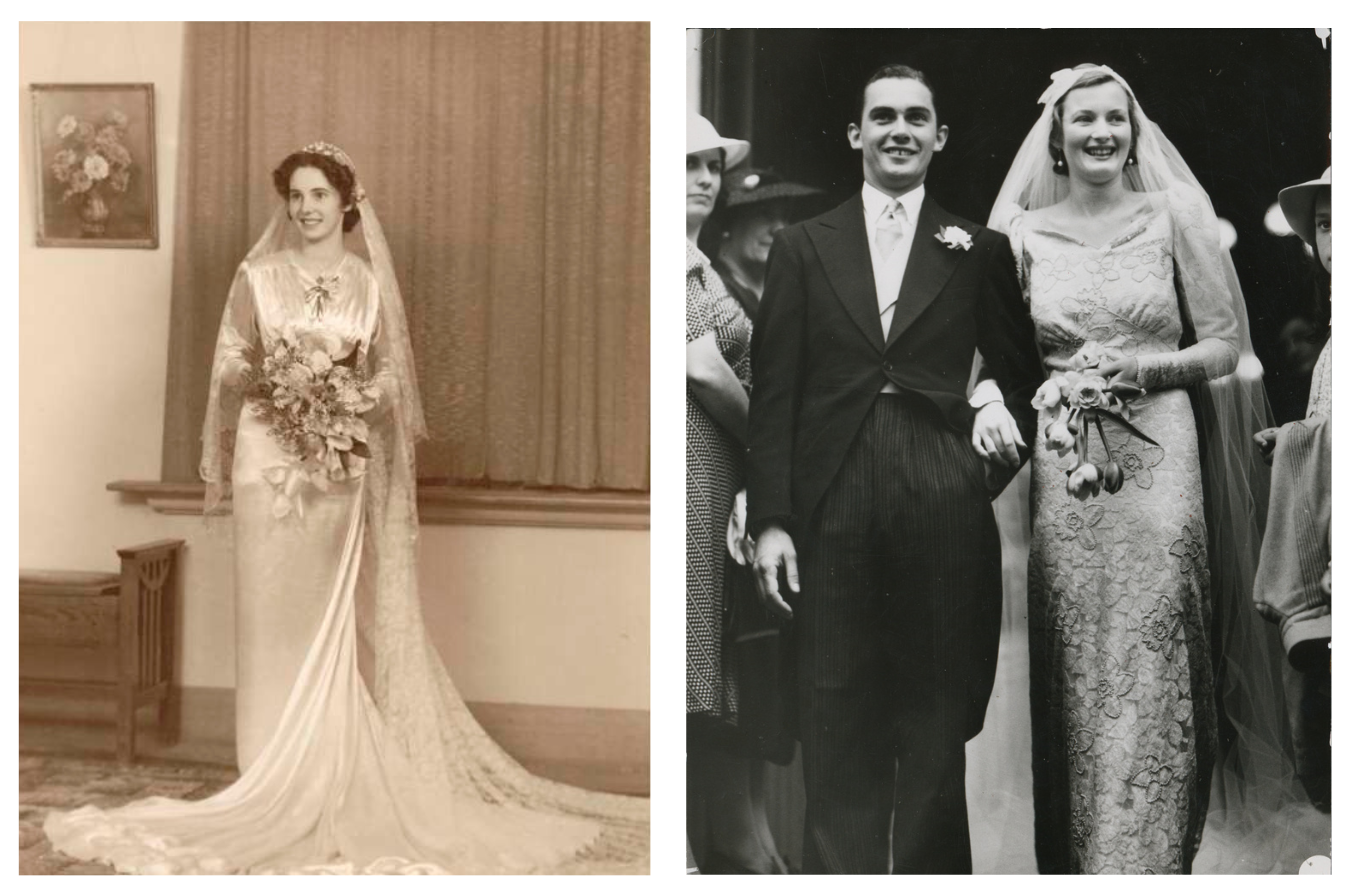
If you’re wondering about 1940s wedding traditions, read these nine tips for luck on your wedding day.

1950s
Short-sleeved wedding dresses started to become popular in the 1950s. These were sometimes accompanied by a bolero jacket over the dress.
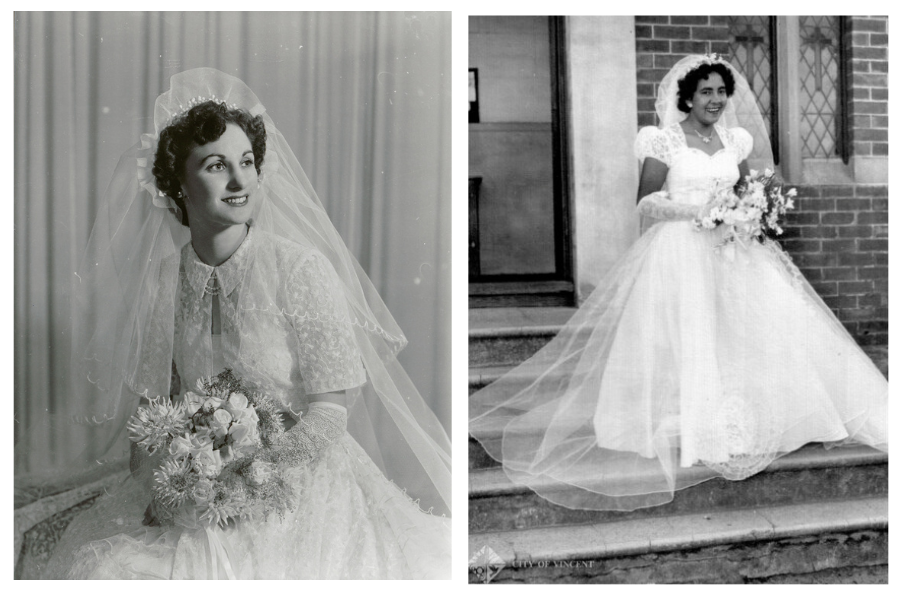
Full skirts were all the rage with layers of tulle, lace and satin.
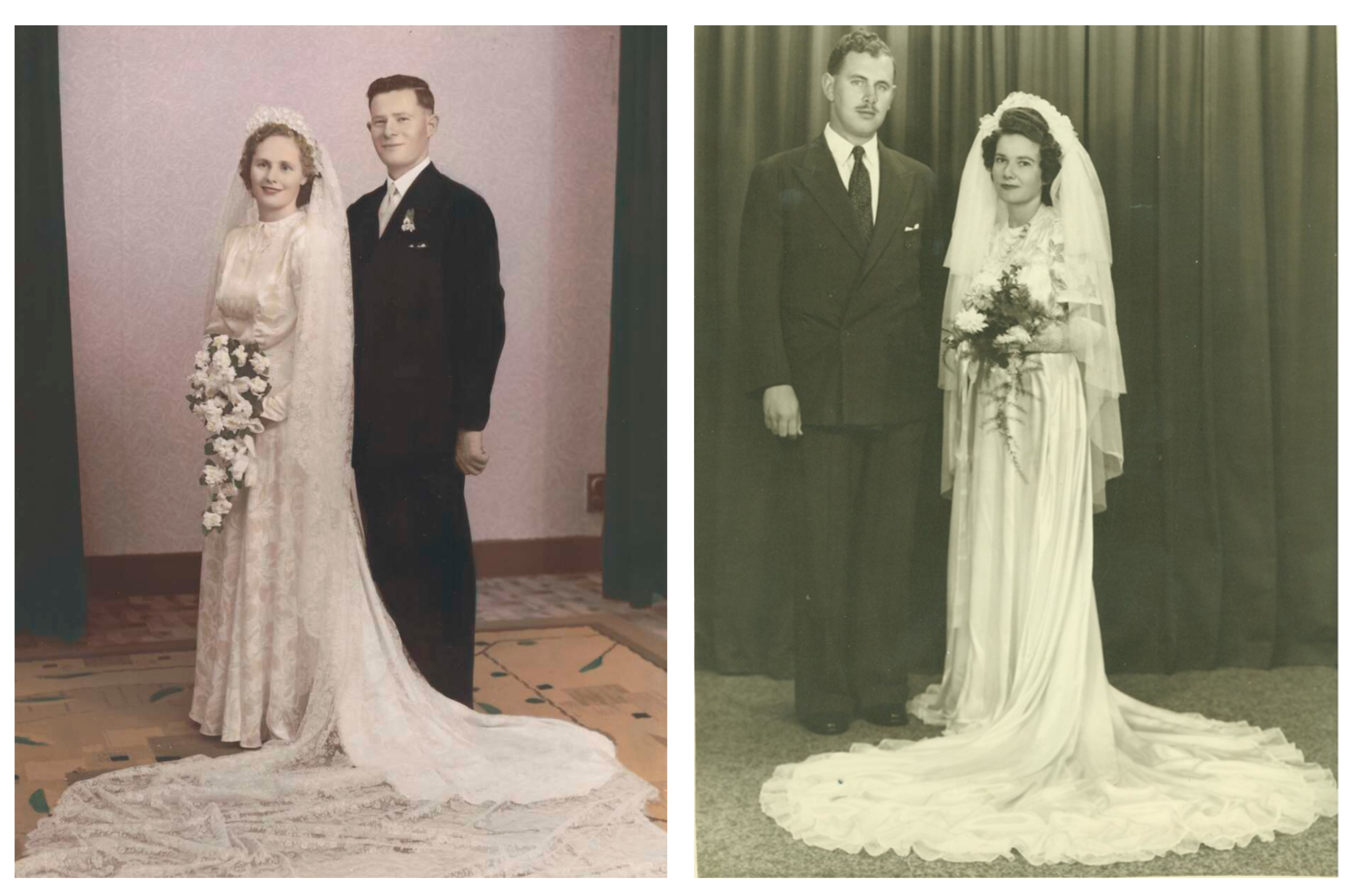
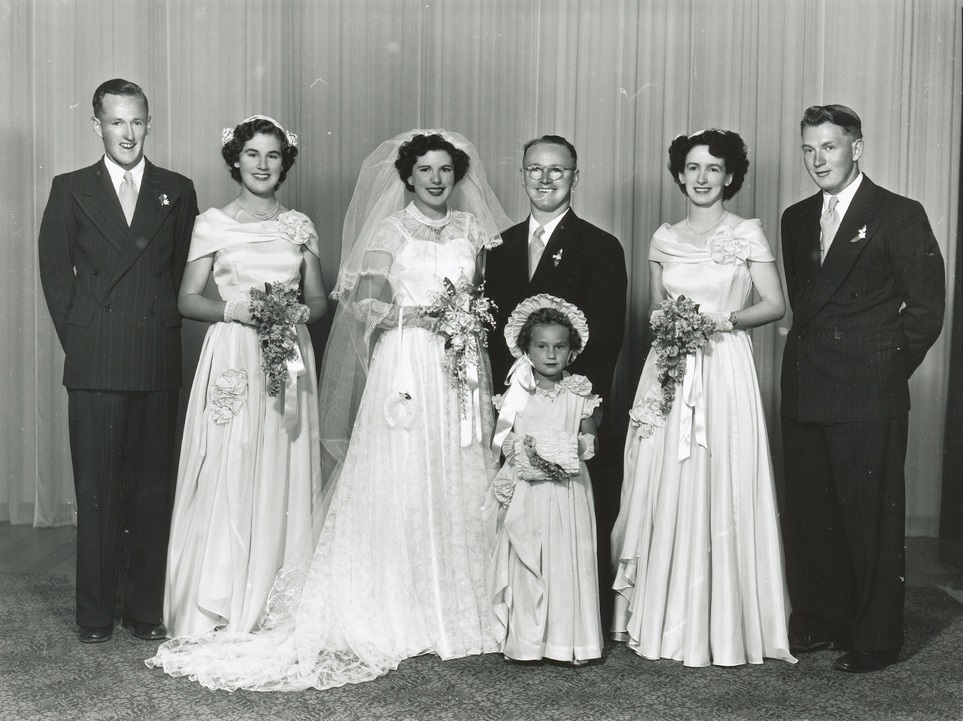
1960s
It was a varied decade for wedding dresses and in the earlier part of the decade we were still seeing the poofy material from the 1950s. But then we started to move away from fuller skirts and towards more structured designs. Some women even opted for simple yet elegant tea length dresses.
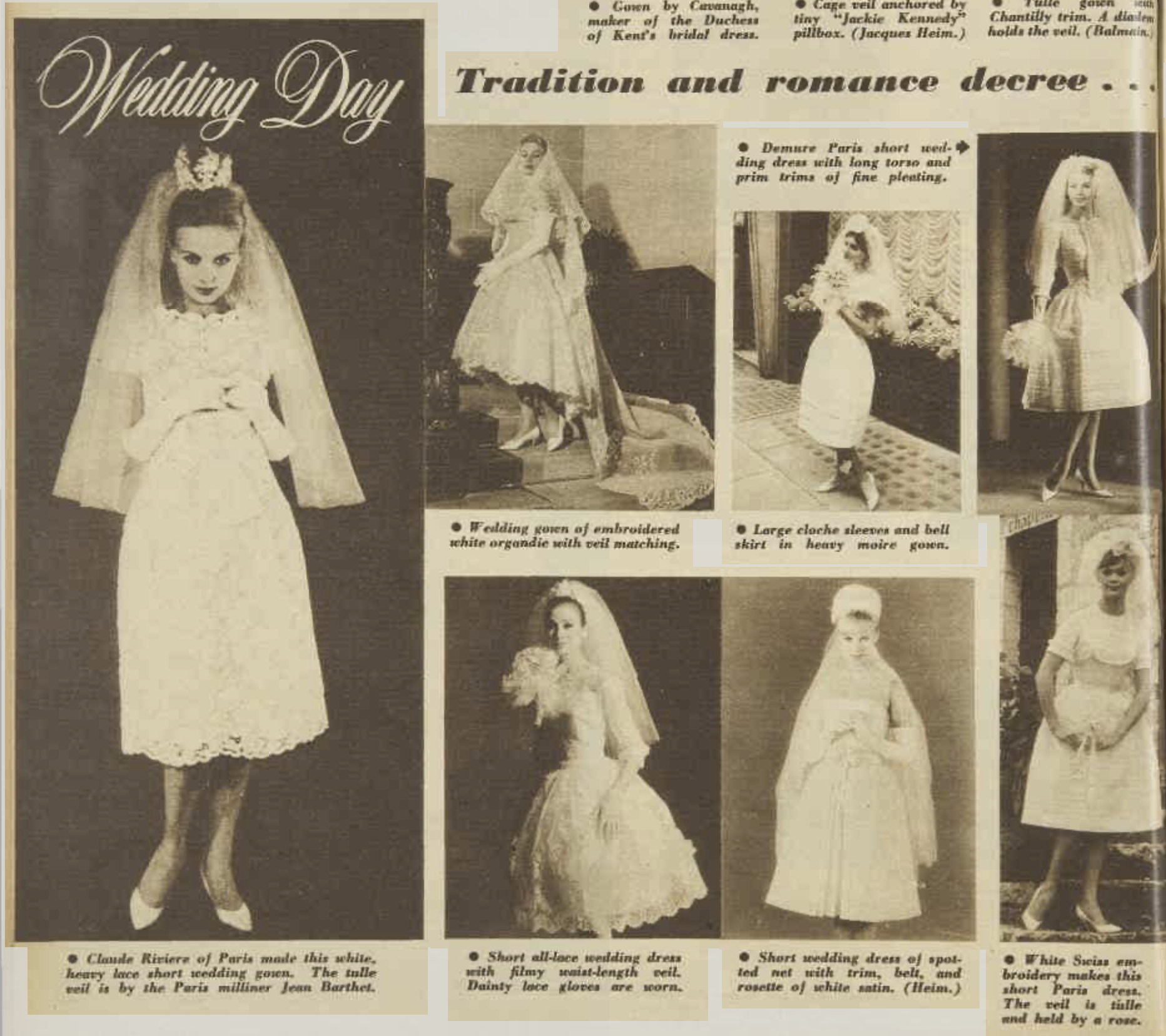
Plan out the perfect at-home wedding banquet with this 1961 menu.
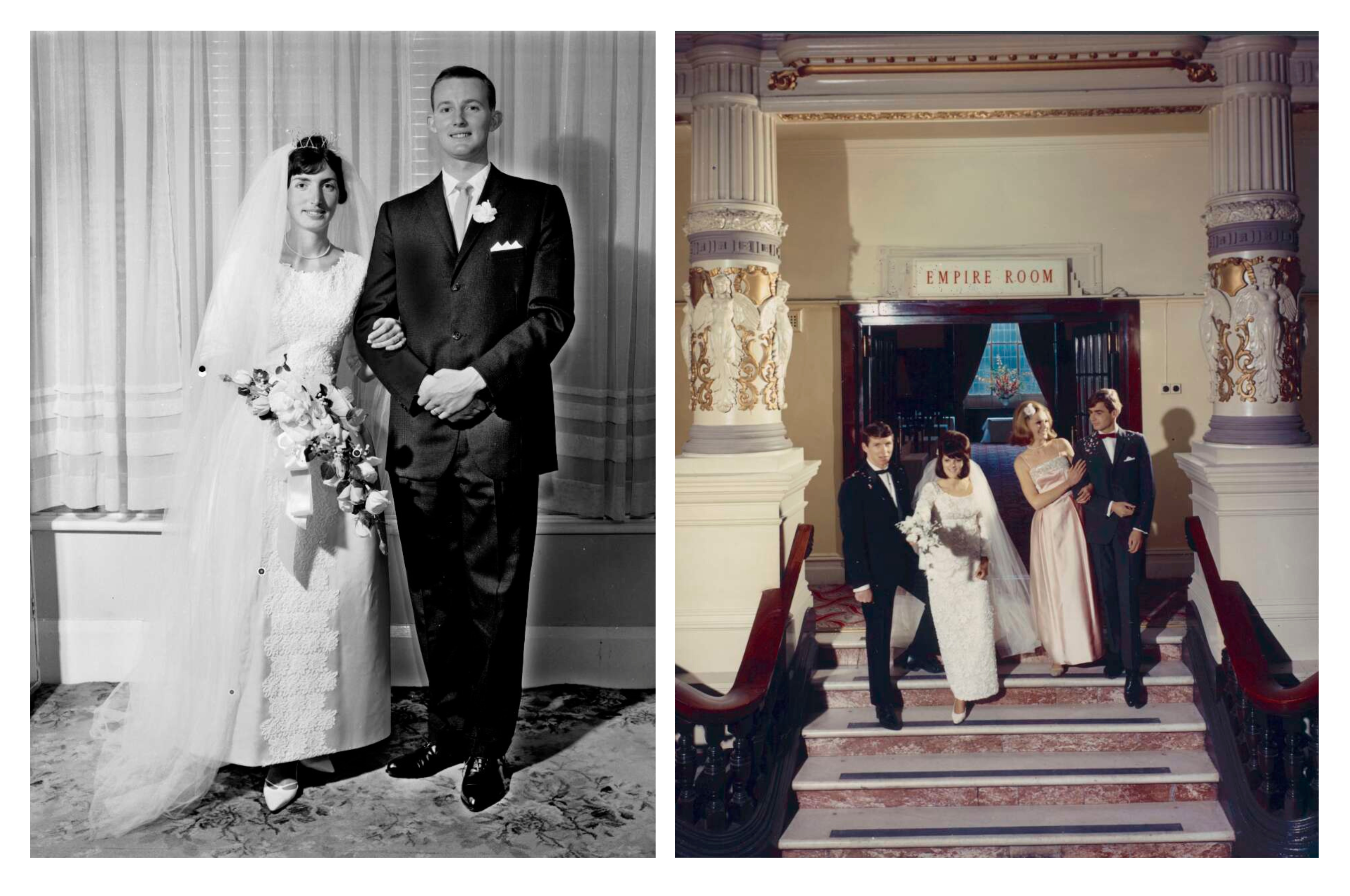
Wolfgang Sievers, Wedding party on steps outside the Empire Room, Federal Hotel, Melbourne, 1965, nla.obj-160877351
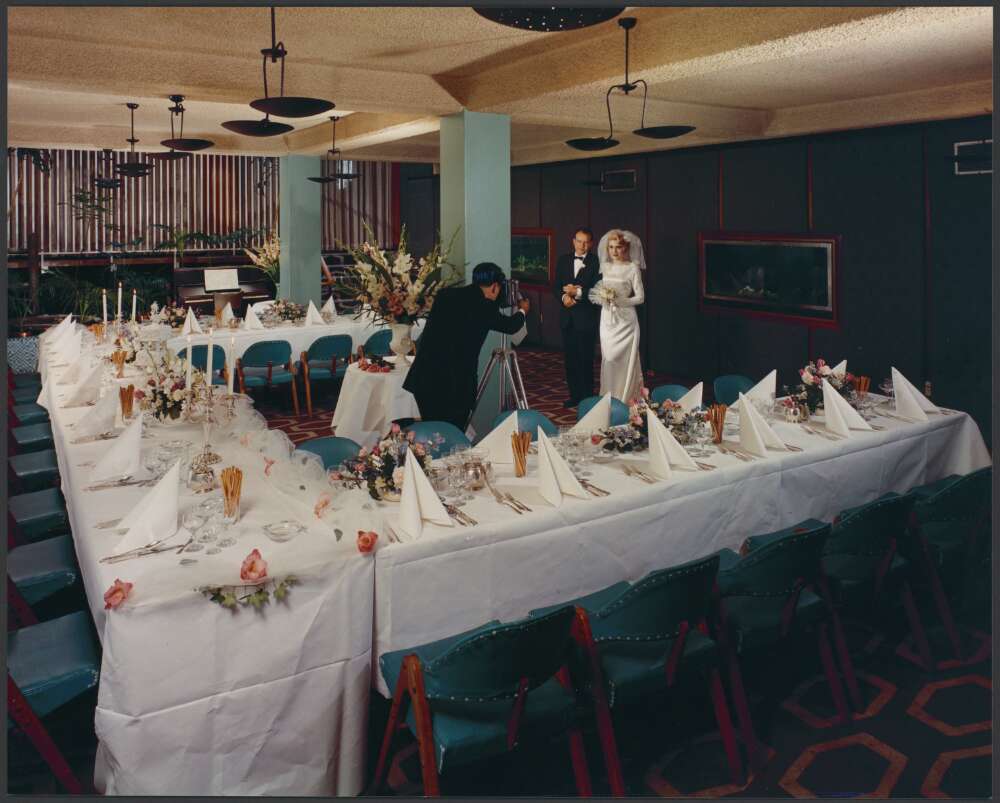
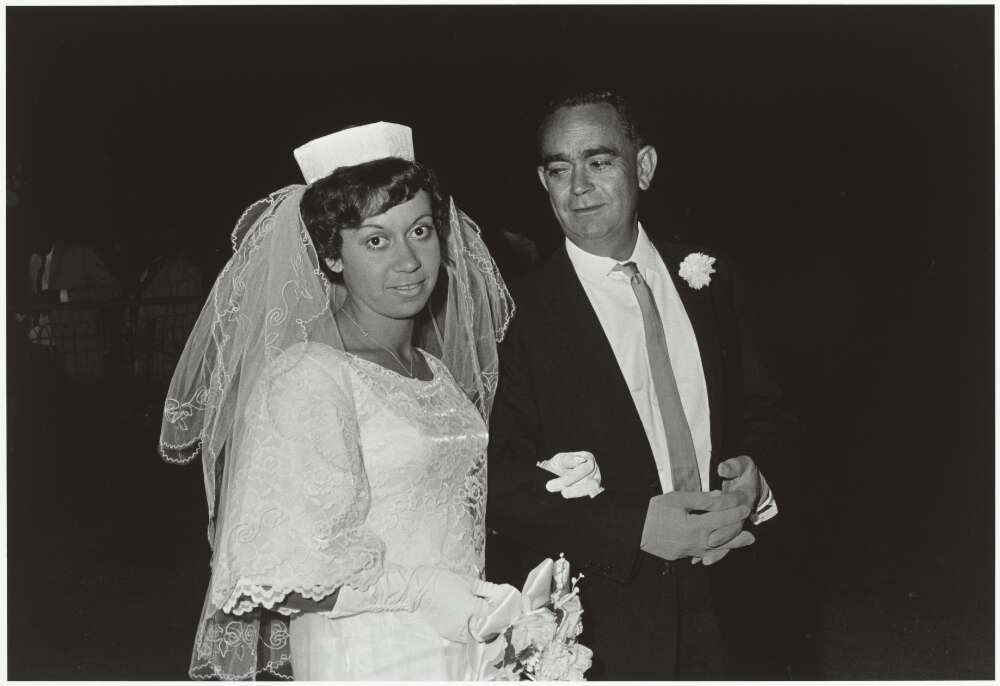
1970s
High necklines and a-line style dresses were abundant in the 1970s. There was a sense of freedom and joy in the flowy and flowery lace. But some women opted for a minidress which was modelled so wonderfully by Audrey Hepburn in 1969. Brightly coloured eyeshadow was also a welcome addition to the look.
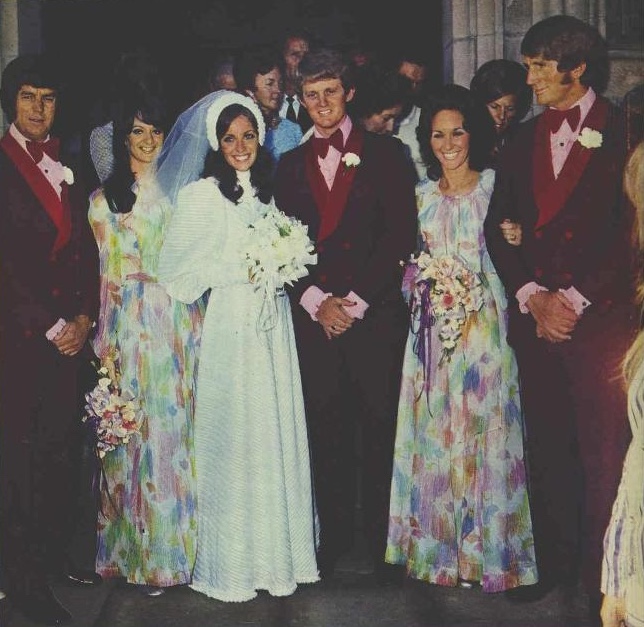
It’s hard to tell if the wedding cakes were inspired by the bridal gown or vice versa. You find more beautiful wedding cakes in this 3 November 1971 edition of The Australian Women’s Weekly.
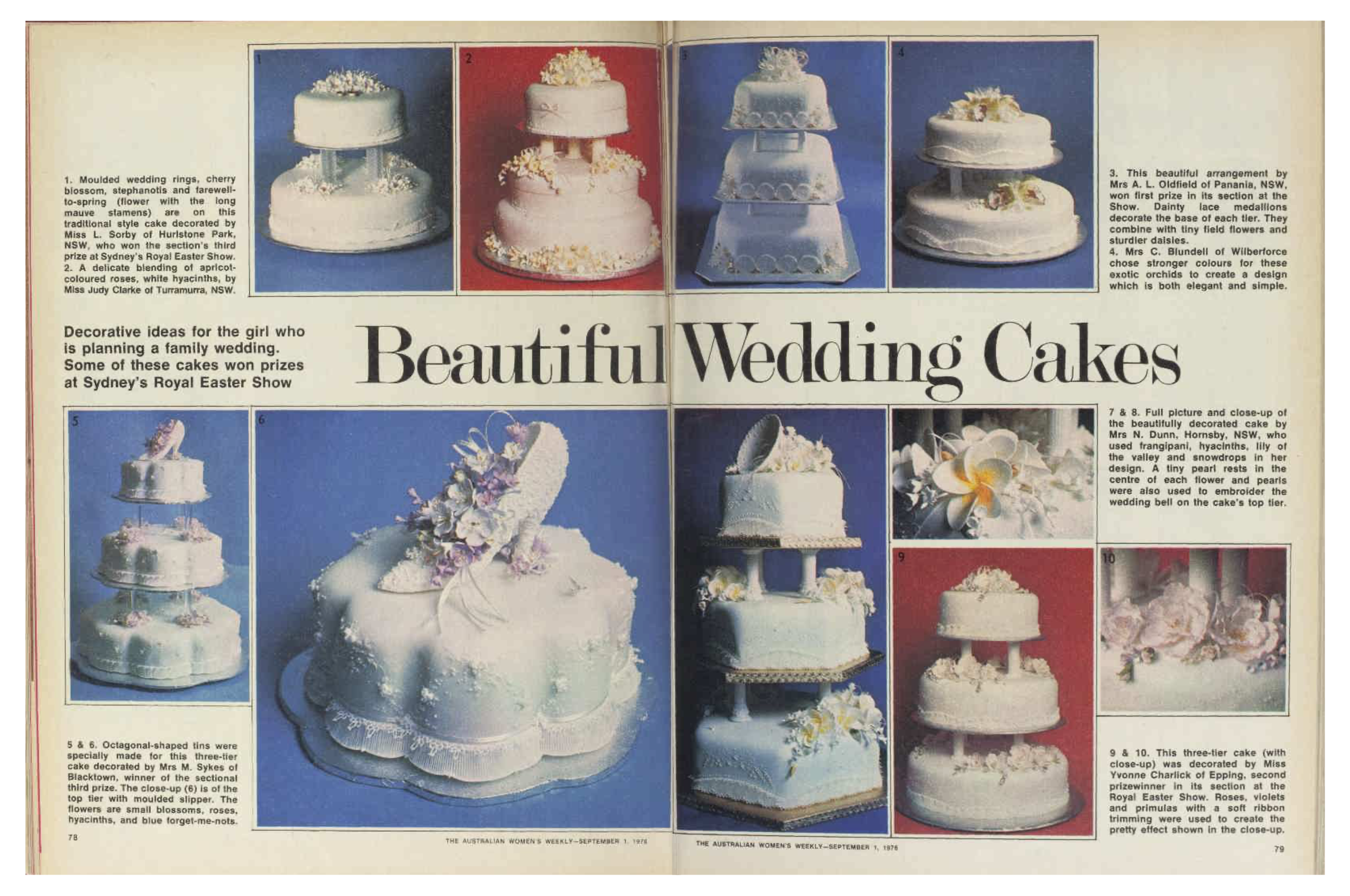
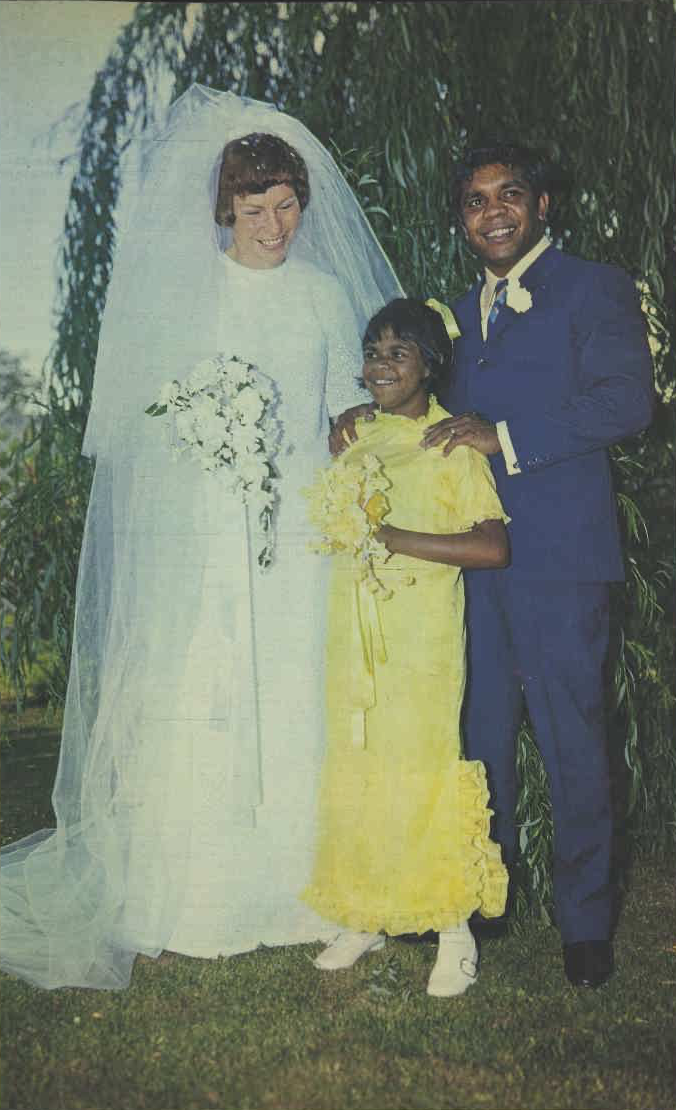

1980s
The 1980s were a time of puffy sleeves, big hair and bold veils. One of the most iconic weddings of the decade was between Prince (now King) Charles and Princess Diana. Her dress was made of ivory coloured silk and complete with puffy sleeves. If you’re curious to see the dress, then you can explore this Australian Women’s Weekly feature on the wedding.
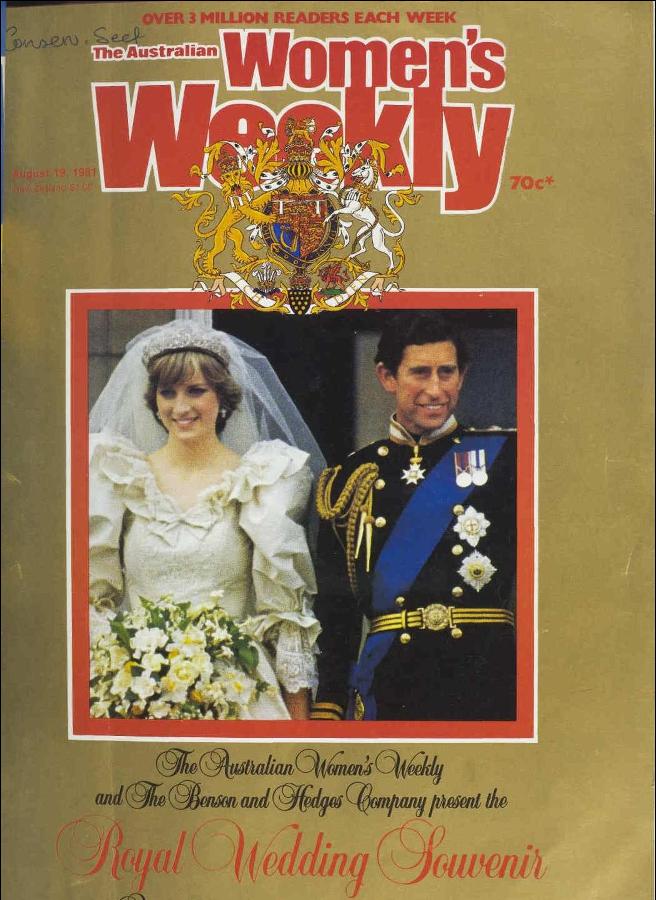
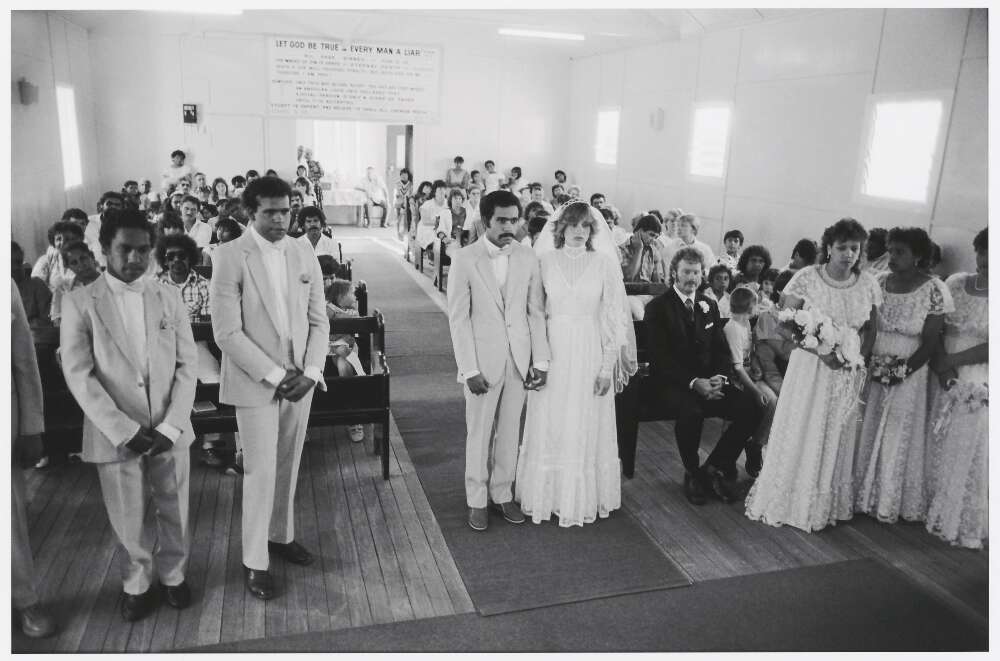
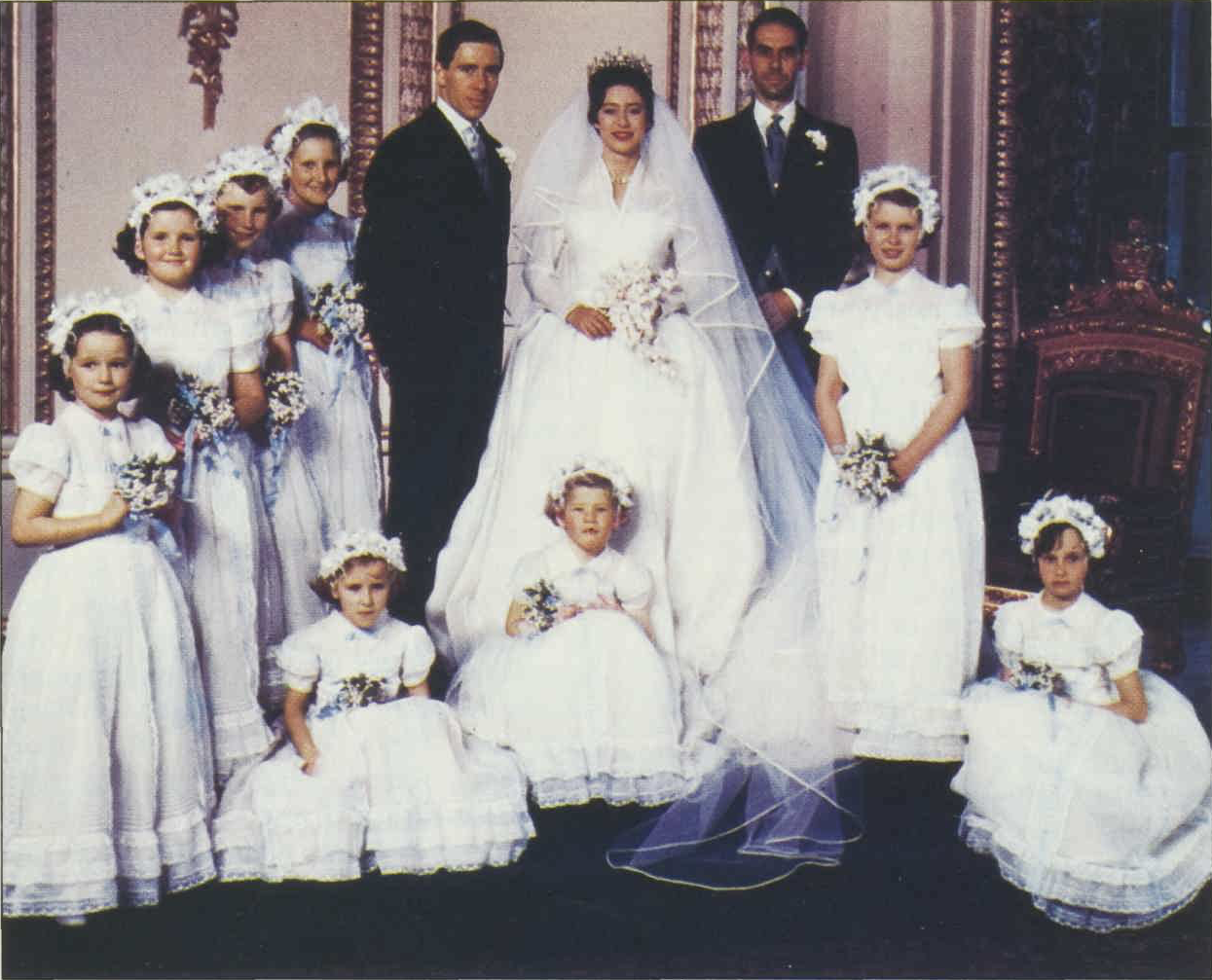
1990
Stepping into the 1990s puffy sleeves were still in abundance, but necklines were changing. Women were opting for more sweetheart necklines, and they were experimenting with different shades of white. Some even went for pinks and blues.
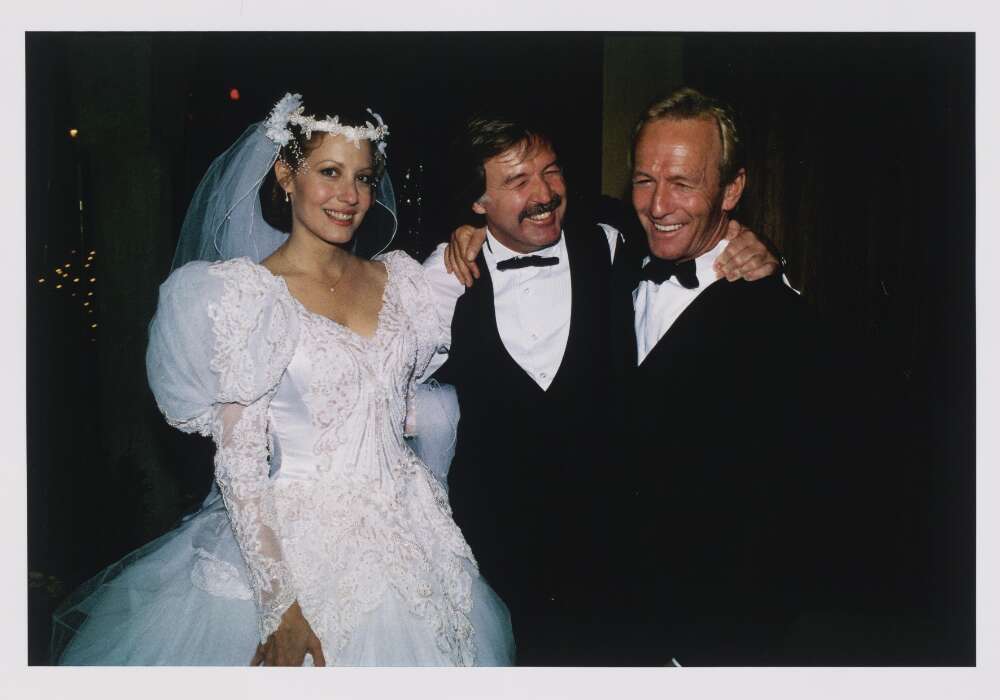

These are just some of the wonderful wedding dresses you can discover on Trove. Start exploring and you may discover your own ancestors wedding photos. Or you might find inspiration for your own walk down the aisle.